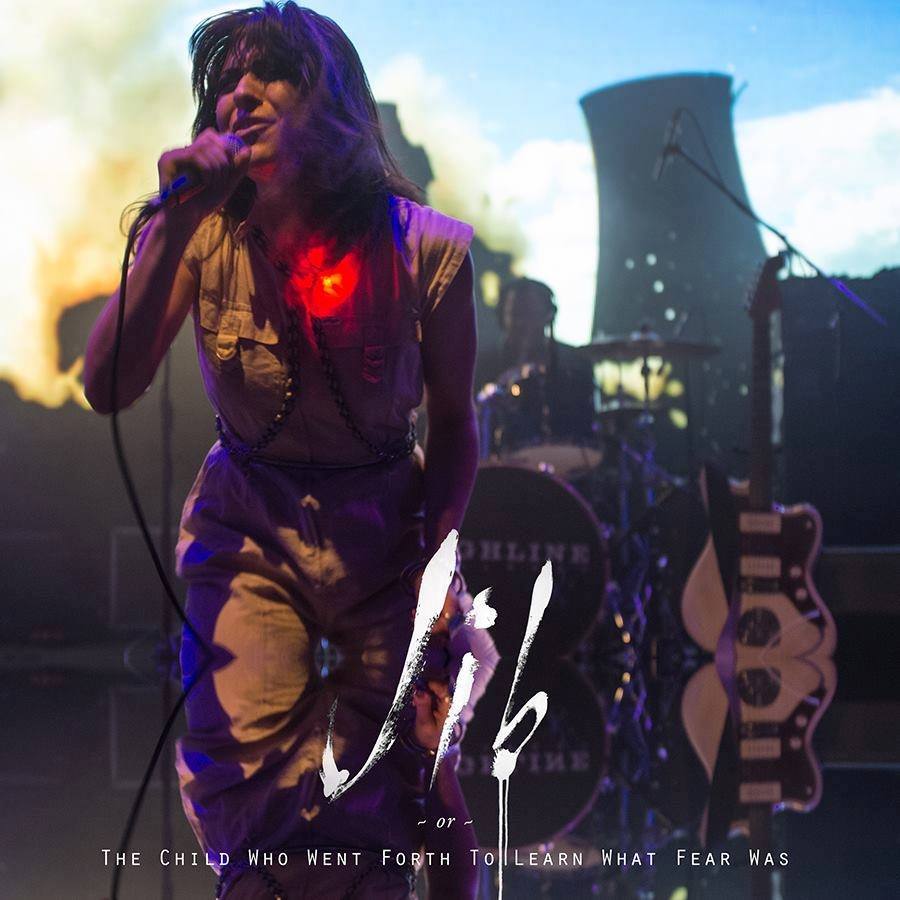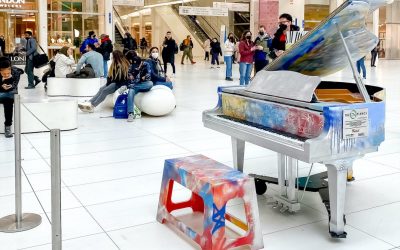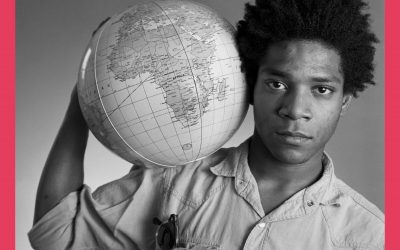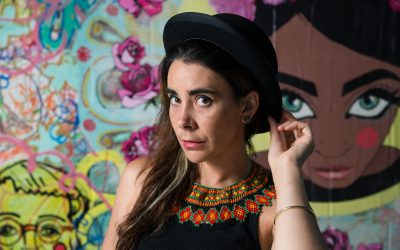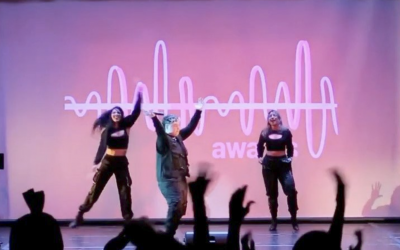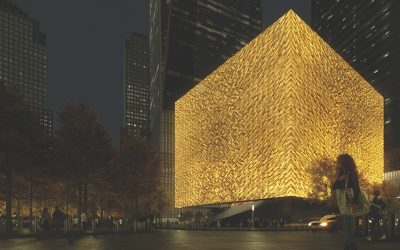On a balmy evening in late summer, a fine-looking crowd of New York’s theater elite and Broadway veterans gathered at a spacious loft in Williamsburg. The loft is the live-work space of Leah Siegel, singer/songwriter and darling of the Brooklyn indie music scene. A hum of excitement filled the air as Siegel’s friends and collaborators arrived in twos and threes, and began to discuss their various theater projects. They had been promised an unveiling.
But at the back of the loft, alone in her dressing room, the weary starlet struggled to muster enough fire in her heart to light the smile that she is famous for. She stared hard at her reflection—at the savage regalness of her cheekbones, at her tired knuckles, and her stage mascara. She flashed a jagged, pretty smile—evasive and yet, somehow, lethally devastating.
“Is this really what I asked for?” Siegel whispered to the mirror. She had just agreed to play the role of JIB—a shattered songstress trapped in the hell of her own fame, in a new play of the same name. Or, alternatively: JIB: The Child Who Went Forth To Learn What Fear Was.
JIB is the brainchild of Michael McQuilken, 37-year-old acclaimed performing arts director and alumnus of the Yale School of Drama. It was the launch of a new, ambitious, and extremely high-tech production of this play—which is really more of a theatrical experience than conventional theater—that was about to be announced and celebrated.
JIB is an experiment in immersive storytelling. It is a spectacular rock musical, with songs by Amanda Palmer and Jason Webley, and reams of praise from such luminaries in the theater world as Beth McGuire, Liz Diamond, Robert Woodruff, and Ron Van Lieu.
“It is a highly-cinematic one-take film and a really spooky ghost play, where the audience is a collective character,” blurts a line from the ensemble’s promotional website. And: “This play is like being inside the mind of a composer.”

Amanda Palmer and Jason Webley
The narrative follows JIB as she travels from youthful obscurity into red carpet interviews and television shows. Cameras track her closely throughout, but the intriguing part is that these cameras are actually filming. And you will be able to watch that film. If you are in the audience, you might even end up in the film. The point is: this massive orchestration is not just a theater piece. It is also a cinematic experience and a music album.
“Just like Alfred Hitchcock built specially-rigged furniture that would pull apart so cameras could pass through it,” writer/director McQuilken explains, “or how camera teams use special jib arms and cranes and sliders. You will see elements of film-making as part of the live performance.”
The most integral component of the whole production, though, is sound. In an early part of the story, you meet a composer who is working on a piece of music. The clumsy, frustrated iterations of this music become the underscore for another scene, which begins simultaneously. All of the sound effects will be created by actors who are not in the scene, until everything culminates into one awesome rock song followed by another, to be sung by Leah Siegel. Because of Siegel’s background as a multi-genre singer, her casting in the lead is resonantly fitting. She is one of the few people involved in the project who didn’t go to Yale.
“I identify with JIB as a performer,” Siegel says about the role. Her own growth as an artist and rise to celebrity has been fraught with doubts and challenges, but her story is truly remarkable. As a college student in Boston, she was earning as much as $700 a day by busking in the streets for money—but she struggled privately with this success because she did not believe that she deserved it.

Coincidentally: Siegel was busking in Harvard Square at the same time Amanda Palmer was doing her infamous living statue performance, The Eight Foot Bride. But the two women did not meet until years later.
“That’s what the show is all about,” McQuilken says. “You have these strangers, who, unknown to one another, are co-composing one ongoing music score. And then you have this guiding sail—the guide sail on a boat is called a ‘jib’—who is the person you can relate to most. JIB’s character taps into these meridians of creativity passing through the air, and it all comes out in her music. She becomes the focusing energy that brings it all together.”
“It’s exciting to plug into something you already know works,” said Amanda Palmer in a video statement. Along with Jason Webley, she is composing songs for the album that will accompany the live performance.
I met Leah Siegel and The Windmill Factory (the art collective of which McQuilken is a collaborator) for the first time at SXSW, in 2014. I was interning at the conference, so one night I found myself standing in an outdoor park with a briefcase full of 100 high-tech, tiny, wireless LED chips, and two tanks of ice-cold helium gas.
My instructions were to read out the number of each light chip, so that it could be synced to special software, before I stuffed it into a giant white balloon. This was a weird and tedious assignment, and I was regretting that I hadn’t eaten dinner. The park was growing cold and dark, and my feet and back hurt from the long day. My fingers hurt from tying the balloons.
“God, these balloons are breaking my fingers,” said Leah Siegel. She was standing next to me, doing the same thing I was. We laughed at the absurdity. That was how I met her.
Leah Siegel performing in the Pixel Forest
Once we had sent a field of 100 white balloons floating in a wave above our heads, Leah began to sing. Her voice lit up the LED chips, and the balloons lit up the sky. Passersby stopped, awe-struck, their faces illumined by the light from the performance.
It was an otherworldly sight to see: this strange, stunning woman out there all alone—in a forest of 100 floating fairy pixels. 100 singing angels—really! It was like a rift opened up in time, and everyone sat down to listen. Someone near me began to cry, and I said to myself: yes, this. This is what art can do. I forgot about my aching feet.
“Music is the gorilla glue between souls,” Siegel explains. “There is something significantly magical in the way music bonds people and the way music imprints your soul. It works in a way that is still largely unknown. You listen with your skin, you listen with every part of your body.You’re using all different parts of your brain to take in lyrics, melody, harmony, rhythm—there’s no other art that does this to the brain. It’s so powerful. I really thought it was the most noble thing I could do with my life: Help people have a bigger, better and brighter experience because there was music.”

There is a tremendous amount of work that goes into pulling off these kinds of projects. The logistics of renting rehearsal space and equipment alone is mind-boggling, especially considering JIB is a wholly self-started project. If you have never encountered anyone who works in theater, just trust me, you have to be extremely dedicated to get this far. On top of writing and producing shows, McQuilken is master of a variety of musical instruments and sound-mixing softwares. Over the course of his career, he has also picked up tricks as diverse as carpentry, video-editing and visual effects. Many of these skills he learned by watching tutorials on YouTube.
“A lot of people spend their leisure time turning off their brains,” McQuilken says. “If the statistics about how much television people watch are true, most people are spending a lot of time tuning into other people’s environments and other people’s worlds. For me, it’s just always been more interesting to create my own environments and worlds. I’ve always been the kind of person who, instead of watching television, I’ll watch a tutorial and learn how to make something. I’ve built up this huge box of tricks. Some people’s boxes of tricks have language and singing and guitar. My box of tricks has other stuff in it. And when a project like JIB comes along, I want to use all the tricks.”
A few other parties involved in the production of JIB include the Old Sound Room, a New York-based performance ensemble whose mission is to “inspire thought and spark action,” and Jon Morris. Morris is a former Cirque du Soleil performer, clown, Fuerza Bruta acrobat, and Creative Director of The Windmill Factory. He is Leah Siegel’s partner in love and work.
“The exciting thing about JIB,” Morris says, “is that the piece itself is about interconnectivity between people. We’re now fusing the worlds of the Old Sound Room and The Windmill Factory, which are both very community-based organizations, and reaching out to you to make that community bigger.”
Siegel adds: “The reason we make anything, the reason we write anything, paint anything, build anything—it’s for other people. It’s for community.”
I find the concept of immersive art compelling for many reasons. Not least of which is that it helps explain my life-long obsession with dressing rooms and backstages. I am not a performer, but I have always loved the theater. And I’ve always felt that it’s a shame to be sitting in the audience, where you only get to see one part of all the drama. To me, the most polished and rehearsed part isn’t even interesting without the rest. I much prefer to watch a show from the wings behind the stage, where all the mess and magic happens.
Backstage is where, for instance, a dancer might need to be stapled into her costume, because a zipper broke minutes before her cue. Or backstage is where a technician might flap around hysterically, looking for a misplaced microphone or wig, only to hand it off to the performer in just the knick of time.
In concert venues, backstage is where musicians sit after the show to decompress and swap war stories. It is where actresses receive their flowers, and tape photographs of old lovers to the mirror. Backstage is where the best drugs are—depending on what kind of show it is.
There is a trope about theater people who cannot stop making theater about theater. Transfer this idea into an immersive, experiential context—for instance, a performance warehouse or a festival—and that is where you’ll find artists like Morris, Siegel and McQuilken working. These are big-thinking, collaborative artists who bring their dressing rooms—their snapped guitar strings, their broken hearts and broken bones, their tears, their visions—their creative labs to you.

Film still from the music video, “Crime Tip,” featuring Siegel (left), Julia Stiles and Dave Hodge (directed by Michael McQuilken)
Seriously, these people are so prolific—and working across such diverse mediums—it is difficult to illustrate in just one article. Just spend some time with McQuilken’s other masterpiece, Oddyseus Finn, which will be touring in South Africa later this year.

Odysseus Finn
The Windmill Factory made a second appearance in my life in 2014, at Burning Man (the first and only time I attended the festival). I was walking by myself at sunrise—a little spangled, to be honest—and the desert was vastly pretty. If you have never been to Burning Man, this is the only way I can describe it to you. There were happy, shy people dusting off their leotards everywhere, all fresh-faced and rosy. The colors were amazing—desert, pink and blue.
I stopped to listen to some music. A stylish blond waif was spinning house music from the roof of a silver van, and I was just daydreaming, drinking coffee out of a blue tin cup, clicking my heels and watching the sun come up when: all of a sudden, Leah Siegel and Jon Morris emerged out of the crowd and grabbed me.
They were doing the Pixel Forest again that very night, and wouldn’t I help them set it up? So I did. Of course I did. Wouldn’t you have done it? In a festival crowded with more than 50,000 participants, I cannot describe that chance encounter as anything less than stupid.

Leah Siegel – Photo by Will O’Hare
But I was also impressed, very deeply, by how difficult and painful this kind of artwork is. There is a lot of equipment to haul around—tanks of helium gas, and tools for driving stakes into the ground. Always on the road. And there was Leah, with the rest of us volunteers, digging holes and sorting through the confusion of the LED computer chips.
Before the sun went down over the Nevada desert, which is expansive and hostile like a tundra, Leah was already shivering in her skimpy white, ethereal gown. By the time the balloons went up and she started singing, it was clear that she was aching, physically. She almost didn’t want the spotlight on her. God, I thought. The life of a performer must be like a prison sometimes, a living nightmare.
But then, she sang the whole night long. She sang until there was a crick in her neck and a twitch behind her eyeballs. She sang until her hands were freezing like a skeleton’s. And the crowd that gathered to watch her was as enthralled as I was. She was so wonderfully gracious, to each and every one of us.
In my mind, Leah Siegel will forever be staring, haunted, into the reflection of her own career, thinking, “I’m not sure I asked for this.” She both does and does not want you to see her doing this, but it is exactly what makes her art accessible. It is what conjoins the superhuman with the human. It’s what makes her a weirdly perfect fit for the role of JIB.
“The real pain of my life is that I’m both a performer and a writer,” Siegel says. “The part of me that is a performer is an extrovert, and the part of me that is a writer is a panicked introvert. I would not wish that on anyone. I struggle with it. The people who know me well are able to see that. It’s the blessing and the curse of my life.”
“That is a lot of what this show is about,” agrees McQuilken. “It’s so hard in this day and age to focus on continuing to improve yourself as an artist, and improve your craft and become a better technician, because so much emphasis is placed on improving your online persona. I prefer to focus on the work and keep my brain out of the hype, that false presentation of self that is so popular and so tempting these days. I would rather read a book, or make a failed attempt at writing a script than go online and update my Facebook profile.”
“The beautiful part is that once a piece is written,” says Siegel, “you can turn off that part of your brain that slaved over the perfect word, and the perfect melody—the perfect everything. The part of you that sat alone by yourself for months, trying to find the answers to these puzzles. It’s so lonely and it’s so solitary. But once that part is done, you really want the songs to explode out into the world in a different way.”
Perhaps these sentiments are best summed up in the tagline of the play itself: JIB: The Child Who Went Forth To Learn What Fear Was. For anyone who has ever considered themselves an artist, these words might even apply to you. Yes, you.
JIB the play is scheduled to premiere at the Neighborhood House in Philadelphia, and run from Dec. 1 to 18. Learn more about the project here. Learn more about the Old Sound Room here.
– by Rachel Veroff

